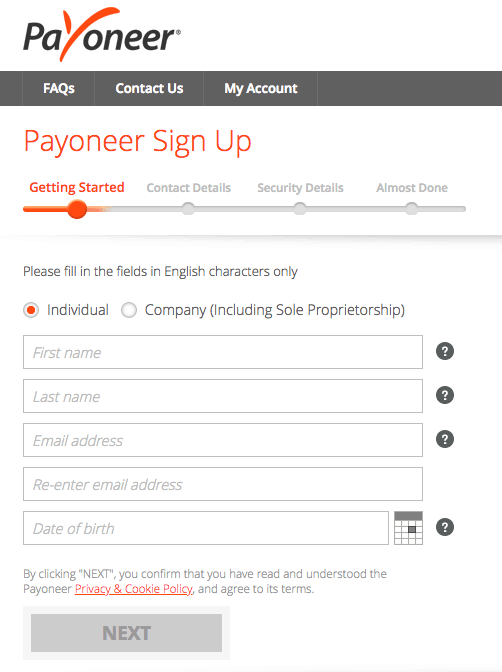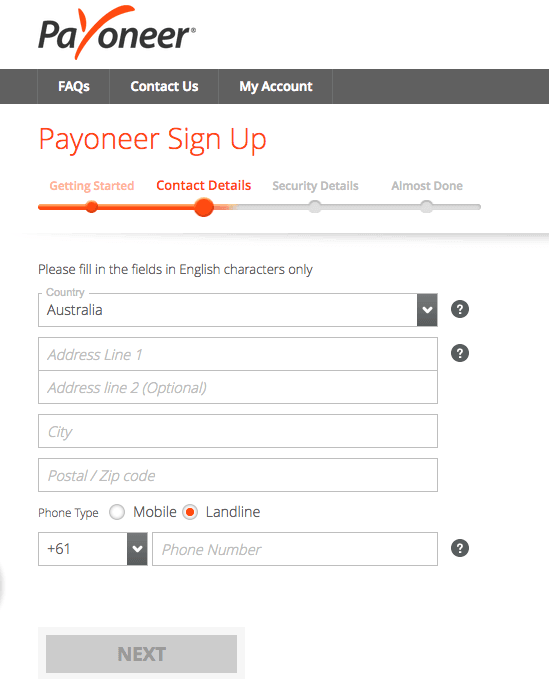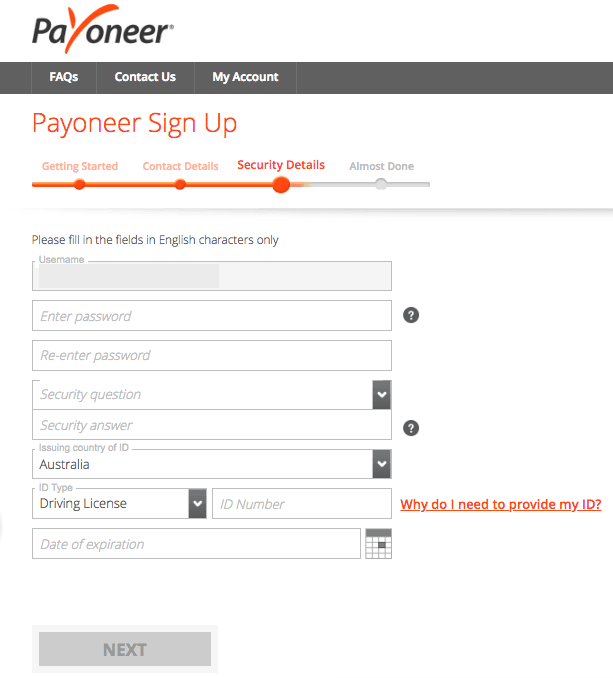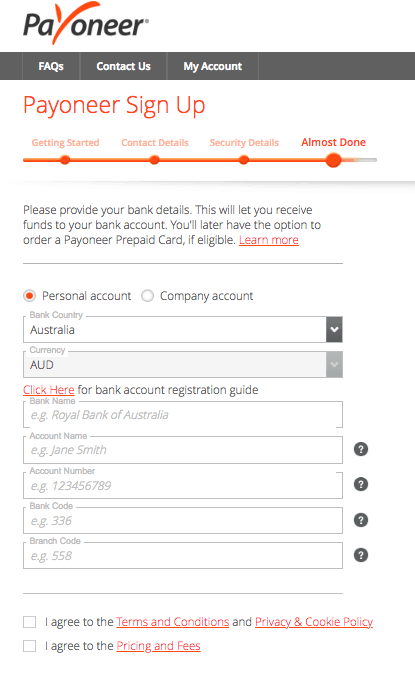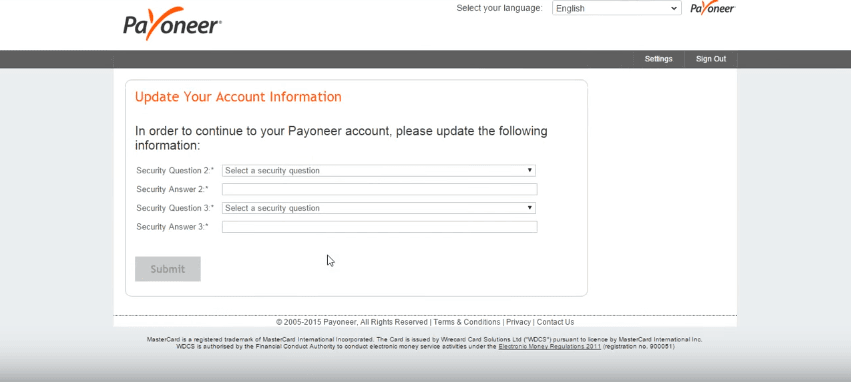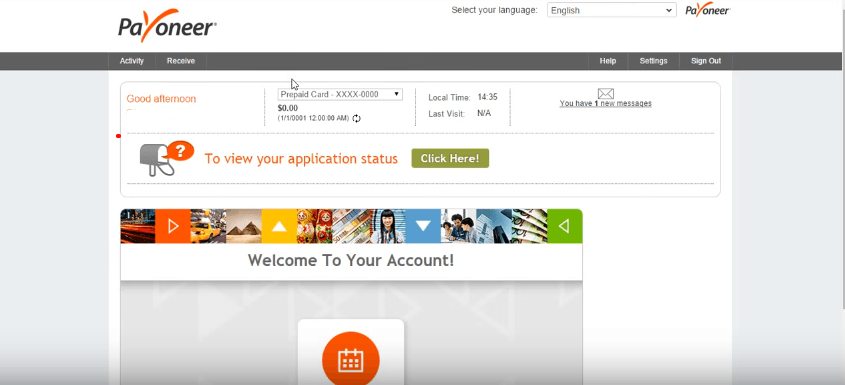Our Verdict
Payoneer is great if you’re a freelancer or run a business as you can send money to global suppliers or remote workers as well as accept payments in local currencies.
Payoneer-to-Payoneer transfers are fee-free but setting up a transfer is not as simple as other services make it and you may need assistance from customer service. Payoneer adds a 2% markup to exchange rates and charges a number of fees that can make your transfer less appealing. Plus, if you don’t make a transfer at least every 12 months, you’ll be charged an annual inactivity fee.
Learn more about:
What can I do with Payoneer?
- Receive payments. You can send a payment request and receive payment to your Payoneer account. You can withdraw your funds at an ATM or transfer them directly to your bank account, which comes with a fee.
- Make payments. You can send and receive payments between Payoneer accounts free of charge.
- Send mass payments. You can make mass payments to your freelancers.
- Automated payments. You can set up automated payments.
- Escrow payments. You can make secure B2B transactions with Payoneer’s escrow payments.
Payoneer exchange rates and fees
While using Payoneer, you may be paid in one currency and withdraw the funds in another currency. In that case, you’ll pay a currency conversion fee of up to 2% above the mid-market rate.
Opening an account is free, but the fees vary depending on what service you’re after.
Make a Payment
Through ‘Make a Payment’, making and receiving payments as a Payoneer customer is free.
Global Payment Service
If you enroll in the Global Payment Service, Payoneer will give you receiving accounts for the following currencies:
- CAD Canadian dollars
- USD US dollars
- EUR Euros
- GBP British pounds
- JPY Japanese yen
- AUD Australian dollars
- CNY Chinese yuan
Receive payments from customers
When you use the Billing Service to receive payments, you’ll pay different fees for payments made by credit card or eCheck.
- Via credit card (all currencies): 3% fee
- Via eCheck (USD): 1% fee
Marketplaces and networks
Marketplaces like Fiverr, Upwork and Airbnb set their own fees for withdrawing payments. You can find these rates on the platform where you work.
- Withdrawing money from your Payoneer account to a bank account in a different currency will cost you up to 2% above the mid-market rate.
- If you’re moving money into your bank account in the same currency, you’ll pay $1.50 for the transaction.
If you’re a high earner, you may have lower fees.
What types of transfers does Payoneer accept?
You can send payments using the following methods:
- Credit card
- eCheck
- Local bank transfer
Usually, the payee will receive the payment in their Payoneer account in under two hours. To withdraw funds from your Payoneer account, you can use the following:
- Prepaid Mastercard from Payoneer
- Local bank transfer
All these transactions will be processed online as Payoneer doesn’t have any physical branches.
Is Payoneer safe to use?
- Security and regulation: Payoneer is regulated and compliant with multiple financial regulators around the world.
- Established: 2005.
- Number of customers: Four million* users.
- Reviews: Trustpilot gives Payoneer a score of 9.2* out of 10, based on over 3,500 reviews.
Payoneer is licenced in Canada with FINTRAC ( the Financial Transactions and Reports Analysis Center of Canada), which means they are required to have risk management systems in place as well as disclosure obligations.
How does Payoneer make money?
Payoneer makes money off the percentage added onto the exchange rate as well as off the fees on certain services.
How to register an account
To use Payoneer, you’ll need to sign up for an account.
-
-
-
-
-
-
-
-
- Convenient pickup methods. With simple and quick bank transfers and the Payoneer Mastercard, Payoneer provides convenient, easy-to-understand ways to access your funds.
- International acceptance. Payoneer supports sending and receiving funds to and from more than 200 countries.
- Low domestic rates. It’s free to send and receive funds using Payoneer’s ‘Make a Payment’. For international transfers, you’ll pay a bit more.
- Low minimum transfer amount. You only need to transfer $20 to use the Billing Service or $50 to use ‘Make a Payment’.
- Limited international transfers. Payoneer isn’t meant for international transfers that aren’t the result of making a purchase or billing for a service. You can’t load funds onto your Payoneer Mastercard and withdrawing funds across currencies carries fees.
- High exchange rates. Payoneer takes an average cut of 2% above mid-market rates when converting currencies, which can be lower than some banks but is generally higher than other online services.
- Limited access to Make a Payment. Not all Payoneer account holders can use ‘Make a Payment’. Typically, you’ll first need to receive funds from one of Payoneer’s partners or through Payoneer’s Global Payment Service.
- Fees for receiving and withdrawing money. You may need to pay a fee for receiving money to your Payoneer account and for withdrawing money. Many money transfer services charge only for receiving or sending money, not both.
-
-
-
-
To make a payment, have your recipient’s Payoneer email address on hand and transfer funds within your account limits. Your transfer will be complete within two hours. To check on your transfer, click “Payments History” under the “Account Activity” tab.
What is Payoneer’s background?
Founded in 2005, Payoneer is a money-transfer system partnered with Mastercard and other companies that employ freelancers. This makes it a popular choice for businesses that often use contractors.
Payoneer’s headquarters are in New York City in the US, but it has spread to over a dozen offices around the world. It currently supports over 200 countries and 150 currencies, with customer service available 24/7.
In a nutshell
Pros
Cons
How does Payoneer compare to other providers?
Frequently asked questions
More guides on Finder
-
Alternatives to TorFX
Looking for alternatives to TorFX for sending money abroad? Check out these reputable money transfer services.
-
How to pay off an overseas debt
Paying off an overseas debt with an international money transfer can lead to huge savings on fees and interest.
-
How to send money to someone without a bank account
Transfer agents, mobile wallets and online credit card payments don’t necessarily require a bank account.
-
Apps like Remitly
Browse money transfer services like Remitly to see if you can send send money overseas faster and cheaper.
-
10 apps like Venmo in Canada
We compare 10 Venmo alternatives to help you find the mobile payment app that suits you.
-
4 Wise alternatives in Canada
Looking for a money transfer service like Wise? Check out these four Wise alternatives.
-
Best money transfer apps
Fast, affordable, safe and easy to use — these are the best money transfer apps in Canada.
-
Fastest ways to make a money transfer
Learn more about transferring money overseas quickly, easily and safely in an emergency.
-
How long does an international wire transfer take?
Ever wondered how long it takes for an international wire transfer to arrive in your recipient’s bank account? Find out here.
-
What details do I need for an international money transfer?
What bank account details do you need to provide to send or receive an international money transfer? Your guide here.


